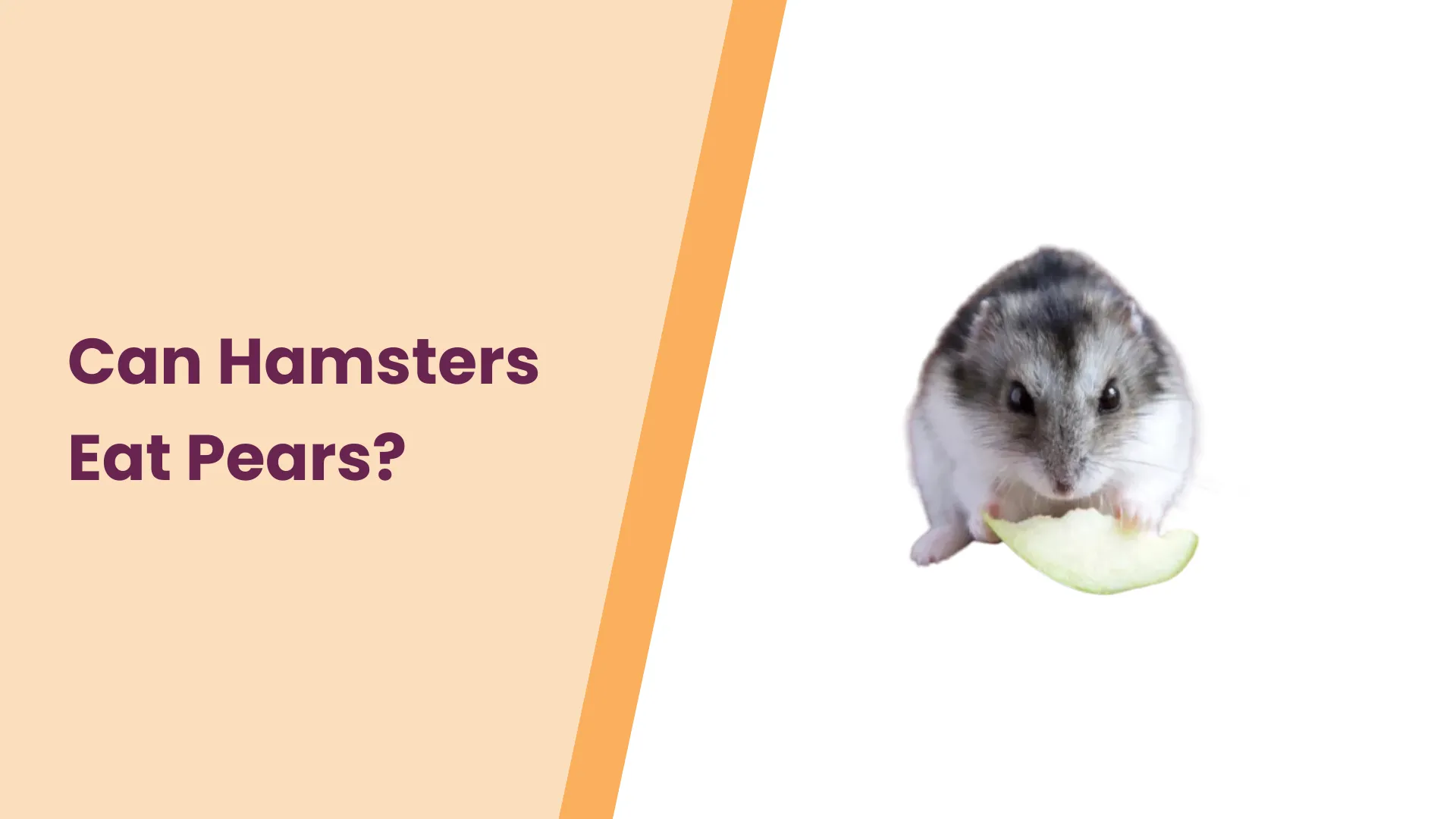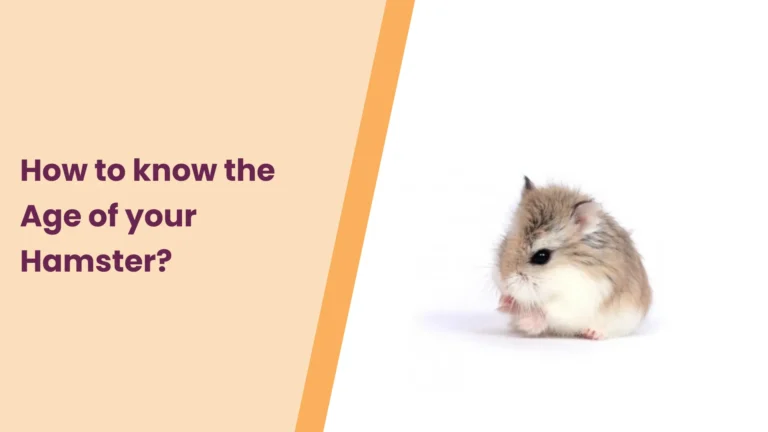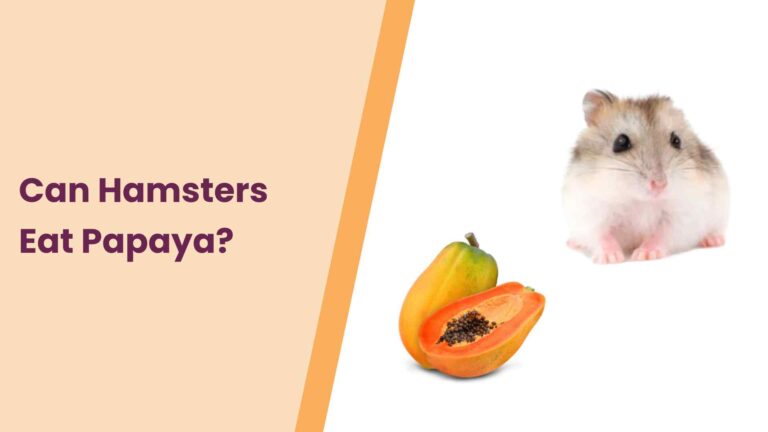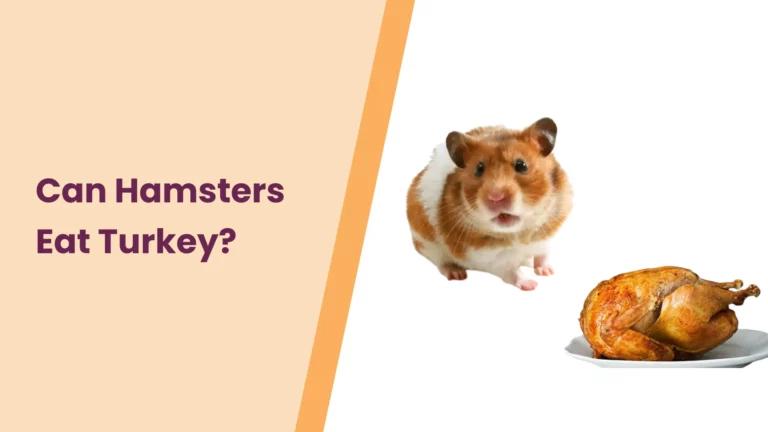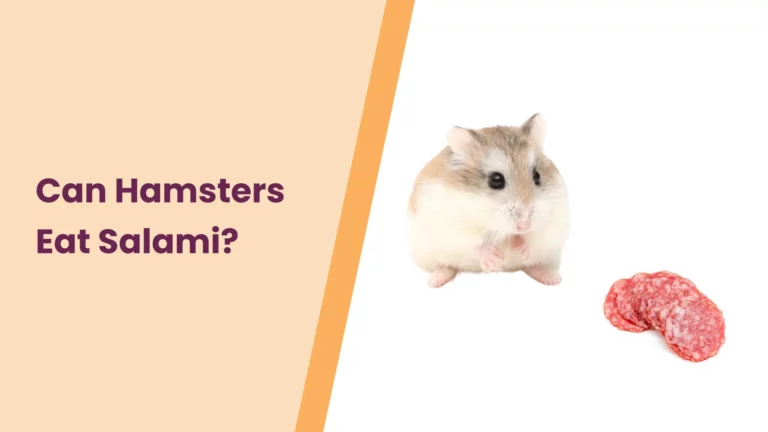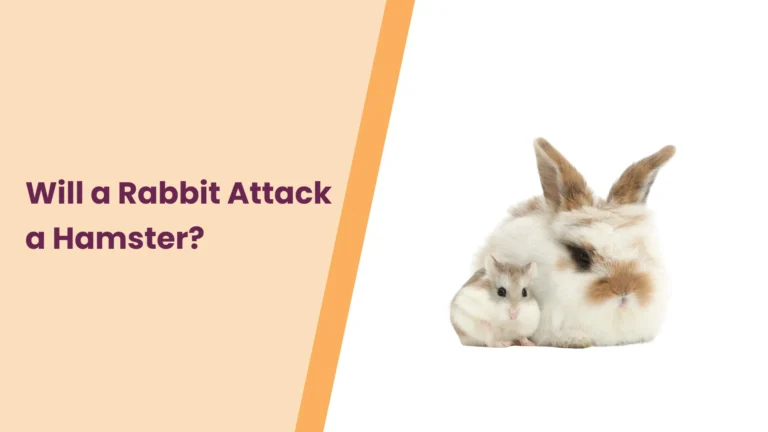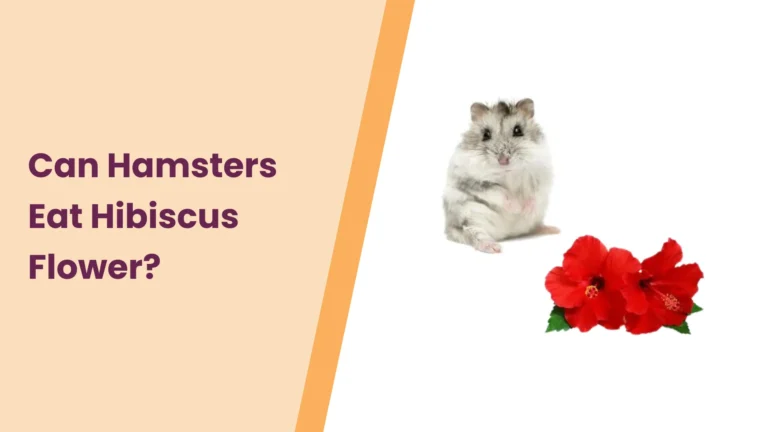Can Hamsters Eat Pears? – All You Need To Know
Welcome, fellow hamster enthusiasts, to another paw-some edition of our hamster care series! Today, we’re delving into a question that tickles the taste buds of both hamsters and their attentive caretakers: Can our furry friends indulge in the juicy goodness of pears? Picture those tiny paws nibbling away at a pear slice – adorable, right?
But before you rush to share your snack, let’s explore the crunchy details. In this fruity adventure, we’ll uncover the nutritional benefits of pears for hamsters, unveil the secret to a balanced hamster diet, and ensure your fluffball stays healthy and happy. So, buckle up for a journey into the delightful world of hamsters and pears – where nutrition meets nibbling fun!
Can Hamsters Eat Pears?
Ever wondered if your hamster could enjoy a taste of nature’s candy? The answer is a resounding yes! Pears, with their succulent sweetness, bring a bouquet of nutritional benefits to our tiny, whiskered companions. These miniature marvels are packed with fiber, a hamster’s digestive best friend. Fiber helps maintain a healthy digestive system, keeping those little tummies happy and functioning smoothly.
But that’s not all – pears also deliver a punch of essential vitamins, including vitamin C, which supports your hamster’s immune system. Picture it as a natural shield, helping your furry friend stay in tip-top shape. Additionally, the natural sugars in pears provide a quick energy boost, perfect for those high-energy hamster adventures in their miniature habitats.
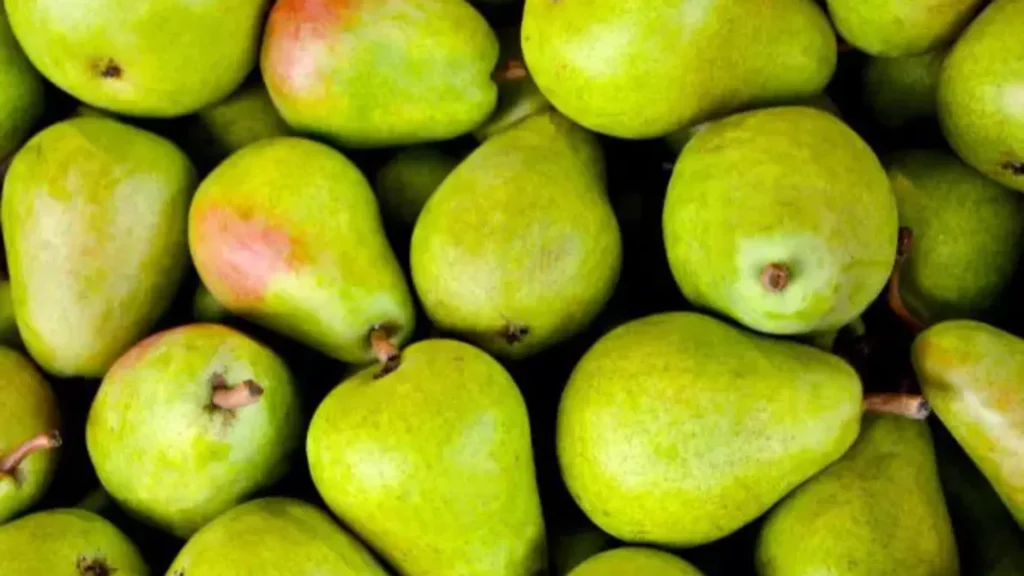
As we navigate the orchard of hamster nutrition, keep in mind that offering pears in moderation is key. While the nutritional benefits are fantastic, balance is the secret sauce to a happy and healthy hamster. So, let your hamster savor the delights of pears, knowing you’re providing a tasty and nutritious treat straight from nature’s pantry.
Moderation is Key
Ah, the joy of treating our little companions to a fruity feast! As we venture into the world of offering pears to our hamster pals, let’s raise our awareness flag: moderation is the golden rule. While pears boast a symphony of flavors and nutritional benefits, an excess of any good thing can lead to unintended consequences in the hamster kingdom.
Imagine this – a hamster, blissfully nibbling on a pear slice, savoring the sweetness. It’s a heartwarming scene, but here’s the catch: overindulgence can upset our furry friend’s delicate digestive balance. The natural sugars in pears, while delightful, should be enjoyed in sensible quantities. Too much of a good thing can lead to tummy troubles and an unhappy hamster.
To strike the right chord, consider pear treats as occasional delights rather than daily staples. Monitoring your hamster’s reaction to this fruity addition is crucial – observe for any signs of digestive discomfort or changes in behavior. Remember, moderation isn’t just a rule; it’s a pathway to a harmonious coexistence between your hamster’s taste buds and their well-being.
So, let the pear parties commence, but keep the guest list in check. Your hamster will thank you with those adorable whisker wiggles of contentment!
How to Prepare Pears for Hamsters
As we embark on the culinary adventure of introducing pears to our hamster companions, the preparation process becomes a delightful part of the experience. Picture this: you, a hamster chef extraordinaire, creating a pear masterpiece for your whiskered friend. To ensure this culinary journey is a success, here’s how you can prepare pears for maximum hamster enjoyment.
1. Wash, Rinse, Repeat:
Start by giving the pear a good wash under cool running water. This simple step ensures you remove any lingering pesticides or contaminants, leaving behind only pure, fruity goodness.
2. Slice and Dice:
Once your pear is squeaky clean, carefully slice it into hamster-friendly portions. Aim for bite-sized pieces, making it easy for your furry friend to nibble without any wrestling matches with oversized fruit chunks.
3. Seeds Away!:
Hamsters, being the tiny wonders they are, may struggle with larger seeds. Be a mindful chef and remove any seeds from the pear slices before presenting the dish to your hamster. This not only prevents potential choking hazards but also ensures a smoother culinary experience.
4. Freshness Check:
Hamsters, like any discerning diner, appreciate freshness. Serve the pear slices promptly to preserve the crisp texture and maximize the flavor experience for your hamster connoisseur.
5. Portion Control:
Remember, the key to a happy hamster tummy is moderation. Offer pear treats in reasonable portions, savoring the joy of sharing a healthy and delicious snack with your pint-sized friend.
In the realm of hamster care, the journey from pear to palate is a shared experience between caretaker and companion. So, with an apron on and pear in hand, let the culinary creations begin, and watch as your hamster savors every delightful bite!
Signs of Allergies or Digestive Issues
In our quest to pamper our hamsters with pear-induced delight, it’s crucial to keep a keen eye on their well-being. Hamsters, much like us, can express themselves in unique ways, and understanding the subtle signals can make all the difference. So, as we introduce the fruity wonders of pears to our tiny friends, let’s embark on a journey of attentive care.
1. Watch for Unusual Behavior:
Hamsters are masters of conveying emotions through their actions. If you notice a sudden change in behavior, such as lethargy, excessive grooming, or a reluctance to eat, it’s time to put on your detective hat. These subtle shifts may be indicators of digestive unease.
2. Keep an Eye on Stool Quality:
The hamster’s version of a health report card lies in their stool. Keep a watchful eye on the quality and consistency. Loose or discolored stool might signal digestive distress, prompting a pause in pear servings until your furry friend is back to their bubbly self.
3. Scrutinize for Allergic Reactions:
Just like humans, hamsters can develop allergies. If you observe signs like itching, redness, or swelling around the mouth or face after pear consumption, it’s time to halt the fruity festivities. Allergic reactions are rare but warrant immediate attention.
4. Gradual Introductions Matter:
Introduce new foods gradually to allow your hamster’s digestive system to adjust. Abrupt changes in diet can lead to upset tummies, so take it slow and steady on the pear parade.
5. Vet Consultation is Key:
If you’re ever uncertain about your hamster’s well-being, don’t hesitate to consult a veterinarian. They can provide tailored advice based on your hamster’s individual needs and health history.
In the delicate dance of hamster care, our role as caretakers involves not only providing treats but also tuning in to the subtle cues our tiny friends share. By staying vigilant and responsive, we ensure that the pear-perfect moments are indeed joyous occasions for both hamster and human.
Other Safe Fruits for Hamsters
As we uncover the delightful world of hamster-approved fruits, pears are just the tip of the iceberg. Variety, as they say, is the spice of hamster life, and there’s a whole array of fruits waiting to be explored. So, let’s embark on a fruity adventure, expanding the hamster culinary repertoire beyond the sweet allure of pears.
1. Apples:
An apple a day keeps the hamster in play! Ensure you remove seeds and core, then slice the apple into manageable pieces for your furry friend to savor.
2. Berries:
Blueberries, strawberries, and raspberries are like little bursts of joy for hamsters. Rich in antioxidants, these tiny treats can be offered in moderation.
3. Banana Bliss:
The humble banana, peeled and sliced, is a potassium-packed snack that hamsters often find irresistible. Just remember, moderation is key.
4. Melon Magic:
Watermelon and cantaloupe can be refreshing options during warmer days. Remove seeds and rind, presenting your hamster with juicy goodness.
5. Grapes (Seedless):
Seedless grapes, cut into halves or quarters, provide a juicy and hydrating option. Always ensure there are no seeds to avoid choking hazards.
6. Papaya Pleasure:
Papaya, with its natural enzymes, can aid digestion. Offer small, peeled portions for a tropical twist in your hamster’s diet.
Remember, the key to a well-rounded hamster diet is diversity. Rotate these fruity delights, keeping an eye on portion sizes and your hamster’s individual preferences. Each fruit brings its unique nutritional benefits, turning snack time into a miniature feast for your tiny companion.
As you explore the fruity wonders, observe your hamster’s reactions, tailoring the menu to their taste buds. After all, every nibble is a step closer to a healthy and content hamster!
Foods to Avoid
In the culinary world of hamsters, where every nibble is a decision, it’s vital to be aware of the forbidden fruits, quite literally. As you curate a menu fit for your petite friend, here’s a heads-up on the foods that should remain untouched in the hamster kingdom.
1. Citrus Showdown:
Oranges, lemons, and their citrus kin may be a zesty delight for humans, but for hamsters, the high acidity can spell trouble. These fruits can lead to digestive upset, so it’s best to keep the citrus out of the hamster feast.
2. Stone Fruits with Pits:
Peaches, plums, and cherries may seem tempting, but their pits pose a choking hazard and contain compounds that can be harmful. Stick to pitless alternatives to keep snack time safe.
3. Avocado Alert:
While avocados are hailed for their nutritional prowess, they contain substances that can be toxic to hamsters. It’s a firm ‘no’ to avocados in the hamster pantry.
4. Onions and Garlic:
These aromatic additions to human cuisine can be harmful to hamsters. The compounds present can lead to digestive issues, making it wise to skip these kitchen staples for your furry friend.
5. High-Sugar Treats:
Sugary treats, like candies or sweets, might seem like a fun indulgence, but hamsters lack the digestive enzymes to process excessive sugar. Stick to natural sweetness from fruits, in moderation.
6. Salty Snacks:
Pretzels, chips, and other salty delights are a human treat, not a hamster’s delight. High salt content can disrupt their delicate balance, so it’s best to resist sharing your snack stash.
By keeping a watchful eye on these culinary culprits, you ensure that every nibble aligns with the well-being of your hamster friend. As you navigate the hamster gastronomic landscape, think of this list as your trusty guide, steering clear of pitfalls and creating a menu that resonates with safety and joy.
Conclusion
In the enchanting journey through hamster nutrition, our exploration of the pear’s role in the petite palate has unveiled a world of fruity joy. As caretakers, we’ve learned to balance indulgence with moderation, crafting a menu that mirrors both nutritional wisdom and the whimsy of hamster taste buds.
The heart of this hamster care guide lies in its commitment to the well-being of our tiny companions. From the nutritional benefits of pears to the art of preparation and the cautionary tales of foods to avoid, each chapter is a brushstroke in the canvas of responsible hamster care.
So, dear readers, as you venture into the hamster care landscape, may you find inspiration in the crunchy delights of pears and beyond. This guide, a labor of love for both hamsters and their devoted caregivers, invites you to create moments of joy and health for your furry friends. Embrace the diversity of fruits, heed the signals of moderation, and let every nibble be a celebration of the bond you share.
For a deeper dive into the world of hamster care, why not explore the full guide? Your hamster awaits a culinary adventure, and with this guide as your companion, you’re bound to create a symphony of pear-fection in their tiny world.
“Our hamster care journey doesn’t end with the turn of a page – it blossoms with the shared experiences of a community passionate about these tiny, whiskered wonders. We invite you, dear readers, to become architects of this shared space. Have a pear-inspired anecdote or a tip that turned snack time into a mini celebration?
Share it with us in the comments below! Your insights, questions, and stories not only enrich the tapestry of hamster care but also connect us as a community of caring companions. Let’s embark on this adventure together, learning from each other and crafting a haven where hamsters and their human friends thrive.
So, don’t be shy – dive into the conversation, and let your voice resonate in our hamster haven. After all, the beauty of this journey lies in the shared tales of fuzzy joy!” – Hamsterpit.

